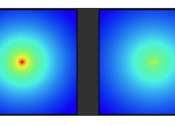Using neutron stars to detect dark matter
The quest to uncover the nature of dark matter is one of the greatest challenges in science today, but the key to finally understanding this mysterious substance may well lie in the stars.

The quest to uncover the nature of dark matter is one of the greatest challenges in science today, but the key to finally understanding this mysterious substance may well lie in the stars.
General Physics
Oct 26, 2021
4
2055

A special edition of EPJST, edited by Balasubramanian Ananthanarayan, Centre for High Energy Physics, Indian Institute of Science, Bangalore, and Subhendra Mohanty, Department of Theoretical Physics, Physical Research Laboratory, ...
Astronomy
Oct 22, 2021
91
364

Prof. Du Jiangfeng, Prof. Rong Xing, and their colleagues from the Key Laboratory of Micromagnetic Resonance, University of Science and Technology of China (USTC) of the Chinese Academy of Sciences (CAS) have set the most ...
Quantum Physics
Jul 14, 2021
0
7

As its name suggests, dark matter—material which makes up about 85% of the mass in the universe—emits no light, eluding easy detection. Its properties, too, remain fairly obscure.
General Physics
Jun 2, 2021
133
423

Much compelling evidence from astroparticle physics and cosmology indicate that the major matter component in the Universe is dark matter, accounting for about 85% with the remaining 15% ordinary matter. Nevertheless, people ...
General Physics
May 13, 2021
1
7

The detection of the axion would mark a key episode in the history of science. This hypothetical particle could resolve two fundamental problems of Modern Physics at the same time: the problema of Charge and Parity in the ...
Astronomy
Apr 30, 2021
2
409

So you want to find dark matter, but you don't know where to look. A giant planet might be exactly the kind of particle detector you need! Luckily, our solar system just happens to have a couple of them available, and the ...
Astronomy
Apr 12, 2021
60
126

The LHCb Collaboration at CERN has found particles not behaving in the way they should according to the guiding theory of particle physics—the Standard Model.
General Physics
Mar 23, 2021
26
9551

Our universe is dominated by a mysterious matter known as dark matter. Its name comes from the fact that dark matter does not absorb, reflect or emit electromagnetic radiation, making it difficult to detect.
Astronomy
Feb 16, 2021
11
3193

About eighty-five percent of the matter in the cosmos emits neither light nor any other known kind of radiation as far as is known, and hence is called dark matter. One of its other notable qualities is that it only interacts ...
Astronomy
Feb 8, 2021
93
68